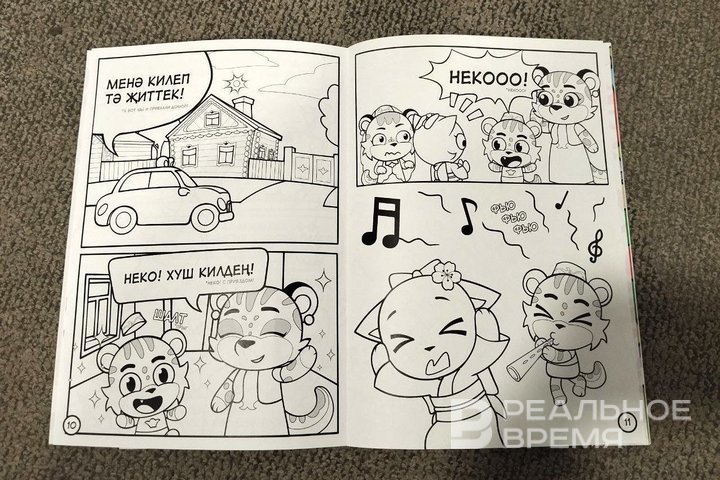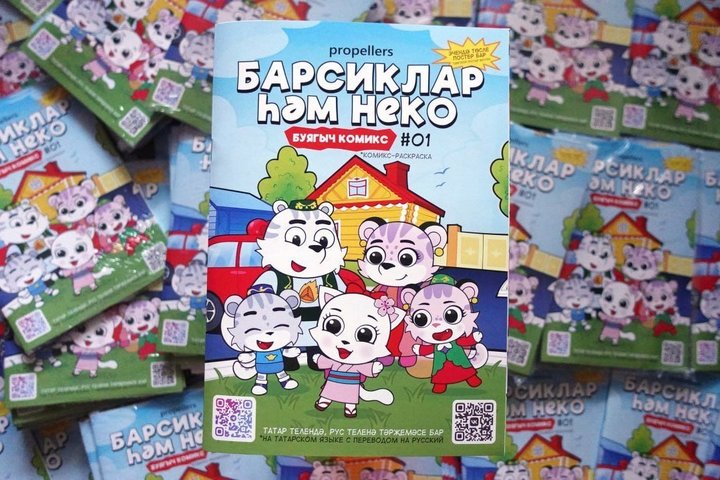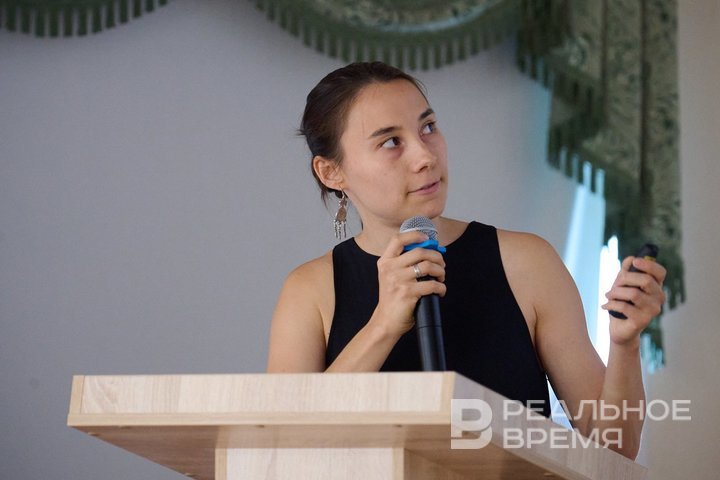If the comic strip ‘Barsiki and Neko’ will become an animated series
The first cartoon collection about a Tatar family and a Japanese cat was presented in Kazan

The animation studio Propellers presented a comic strip in the Tatar language with a Russian translation Barsiklar һәm Neko at the National Library of the Republic of Tatarstan. The collection is dedicated to a Japanese cat who came to a Tatar family to study Tatar poet Tukay’s language. The authors of the comic hope to soon turn this story into another animated series.
Communication issues
Propellers' works can be seen online, they are aired on SHAYAN TV channel. The most famous are probably the musical series Tikabo, a story about clouds, a whale, a volcano and a flying saucer Uyotnaya Dostavka.
This time, the studio presented a comic about a Tatar family of snow leopards at the National Library of the Republic of Tatarstan. The father's name is Rauf, the mother's is Rufiya. They have children Marat and Leila. Grandma Rumiya also lives with them. A cat named Neko comes to Kazan from Japan. The first episode is dedicated to the problem of cultural and linguistic communication: the Japanese woman does not know Tatar well, and the Tatars do not really understand (except, it seems, the grandmother) the peculiarities of the Japanese mentality. So the traditional hospitality scares the furry representative of the Land of the Rising Sun, but in the end everyone sits down to eat balish. The script for the comic was written by Roman Tramvay (his portfolio includes participation in Masha and the Bear project). The illustrations were created by artist Natalia Chasovskikh, working under the pseudonym Nataliya Hankor. She worked with proofreader Dmitry Ishimov. Olya Tayi acted as the creative producer and director of the project. The entire comic is in Tatar, with all lines carefully translated into Russian.

A Cat from Japan
The studio invested its own funds in the comic, and the Kazan City Hall competition of projects dedicated to the study of the Tatar language and the development of Tatar culture Uz Telem also helped.
Defending the project, translator, proofreader and consultant Zuleikha Kamalova said:
“I have a daughter. She goes to a kindergarten where not everyone speaks Tatar. And she was inspired and decided to teach children herself. But I think that not only children should do this.”
“We wanted to create some kind of full-fledged story in which characters would participate, there would be a twisted plot,” explained the head of the studio Artur Shamshadinov. “Our comic is the first attempt to launch this story into the world.”
“We had an interesting idea — how to make a comic in such a way that a character who finds himself in the circumstances of an unfamiliar language would be interested in learning more about the language itself and about Tatarstan,” he explained the essence of the project about Neko. “And we found such a character. This is a cat who comes from Japan to visit us in Tatarstan in a Tatar family.”

“We focus on the cultural code”
As Shamshadinov explained, having recently visited Japan, he was able to experience an interesting effect that Japanese anime (when you watch it in the homeland of the producers) does not look like a fairy tale or something unusual — it is a story about the life, everyday life of this country.
“Our comic is not just some random stories translated into the Tatar language. This also happens. And we focus on the cultural code and what is directly under our feet,” the head of the studio noted.
The project was assisted by Ryo Hatori, who worked in an animation studio in his home country and has lived in Kazan for the past three years.

“In Russia, I study cultural studies. I am interested in different folk cultures in Russia,” explained Hatori.
“Ryo helps us, corrects us in the context of the comic so that we do not make mistakes in the part where we talk about Japan,” explained Shamshadinov.
As Kamalova explained, the comic is black and white, but is positioned as a colouring book. It also has a poster inside, and of course, focusing on children, the publishers could not help but make a collection of stickers.
In the future, the studio hopes to turn the story into a series. At the presentation, Shamshadinov said that he has an idea to launch another animation project this year — a series about pies based on Tatar proverbs.